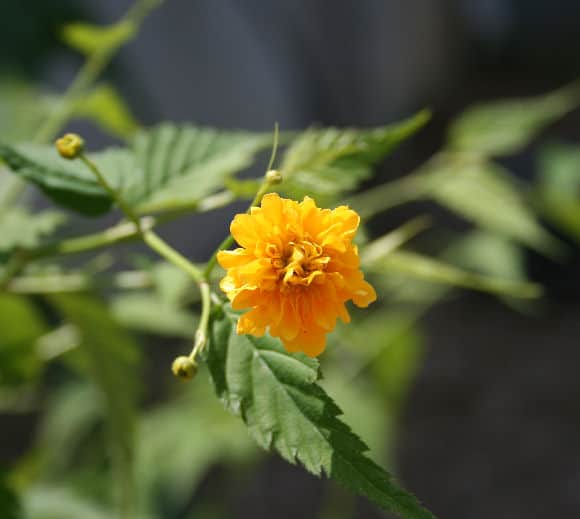Learning how to understand scientific names of plants mean learning the language of botany. And it’s not hard – really. Once you get the hang of it, it’s fun!
Why Scientific Names Are Important
Have you ever wondered how to understand scientific names of plants? Why do plants have those odd-sounding Latin names, anyway?
Beginning gardeners are often intimidated or confused by the odd-sounding names in italics in gardening books and catalogs. “Oh, that,” they think with relief. “That’s what my mom called Bridal Wreath.” Or pink dogwood, or jack-in-the-pulpit, or a maple tree…
Botanical Plant Names: How Plants Get Their Names
Plants have both common names and scientific names, and it’s important to know and understand the distinction between them. Carolus Linnaeus (1707-1778) started the system of scientific classification in use today to help organize and categorize thousands of plants from around the world. He chose Latin, the language of the educated classes and a language in use in most Western countries in addition to the native language, to organize and classify plants.
This system remains in use today, and while botanists sometimes change a plant’s designation or decide it belongs somewhere else in the scientific classification system, Linnaeus’ system remains a useful and valid method of identifying each unique plant in the world today.
How to understand scientific names of plants means understanding Linnaeus’ system. Once you learn it, you’ll realize why scientific names are important. They ensure that when you refer to a plant by name, everyone worldwide uses that name.
How to Understand Scientific Names of Plants: Scientific Classification System
All plants are grouped into nine categories of the scientific classification system to create a unique, precise description. The scientific classification system includes:
- Kingdom
- Division
- Class
- Subclass
- Order
- Family
- Genus
- Species
- Variety
Most gardeners are concerned with the Genus, Species and Variety. These three are often listed in plant catalogs and gardening books to help gardeners precisely identify which plants are being discussed.
As an example, let’s look at the pink flowering dogwood, a common woodland tree in the United States particularly along the east coast.
Kingdom: Plant
Division: Tracheophyta
Class: Angiospermae
Subclass: Dicotyledoneae
Order: Cornales
Family: Cornaceae
Genus: Cornus
Species: C. florida
Variety: C. florida var. rubra
I put the last three sections of the classification system in bold to highlight the three sections you will see referenced in gardening materials everywhere. The genus, species and variety are the three major points you will need to accurately identify a plant and make sure that when you say “pink flowering dogwood” and I say “pink flowering dogwood” we are both talking about the same thing!
That’s why scientific names are important. The precise botanical Latin name of the plant identifies it worldwide no matter what the local common name of the plant is.
Genus and Hybrids
Plants in the same genus are very similar, and members of the same genus often cross-pollinate with one another; hybrids are created from plants of the same species or within the same genus.
When writing Latin plant names, the name should be in italics, with the genus capitalized and the species and variety in lower case letters.

Why Bother with Scientific Classification of Plants?
“A rose by any other name would smell just as sweet” – or something like that, right? You’d think that a rose is a rose is a rose, but it’s not quite as simple.
With literally thousands and thousands of plants in the world and new varieties introduced annually, the use of Latin plant names helps gardeners, botanists, seed companies and everyone who loves plants accurately identify each unique plant. While you may know the common names for plants in your area, common names are only common to a particular region, city, state, country or even family!
In my family, for example, we had a yellow flowering bush in the yard that flowered each May and attracted what looked to my childish eyes like thousands of bees. I called it the “Bee Bush” and the name stuck – the yellow shrub was forever known as Bee Bush in our family, and whenever anyone asked me what it was, that’s all I knew.
Years later and after selling that home, I wanted to plant a similar shrub in my yard. But how to find it at the nursery? I had no idea what it was called, only that it was a yellow flowering shrub that bloomed in May. It was only after perusing many gardening books that I was able to identify Kerria japonica as my “bee bush.” But this example illustrates the perils of knowing only the common name. In my case it was a bit extreme – most families don’t have their own unique names for plants – but you will find that the common name for a plant does change in different locations. By using the Latin plant name and the scientific classification of the plant name, you will always speak with pinpoint accuracy and be able to look up information about your plants quickly and easily.
Learning how to understand scientific names of plants means that when you want a Kerria japonica, a Cornus kousa, or any plant at all, you’ll name it accurately and purchase exactly the one your desire.




